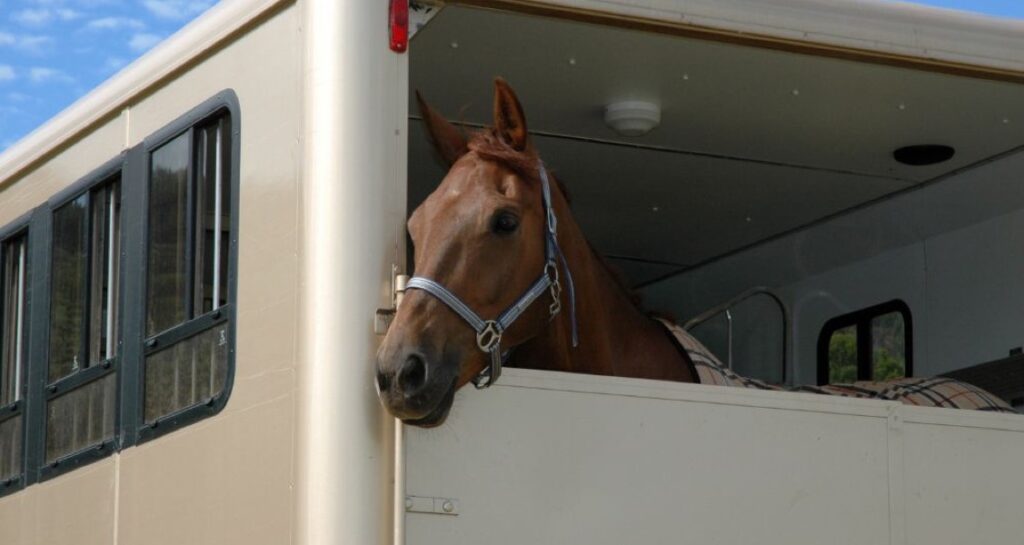Transporting your horse isn’t just about getting from point A to point B—it’s about ensuring their comfort, safety, and well-being every step of the way. A poorly planned trip can stress your horse out or even lead to injury, which can have lasting effects on both their physical and mental health. The following basic guidelines for safely transporting horses sets the foundation for a positive travel experience.
Inspect the Trailer Before Loading
Before hitting the road, it’s crucial to inspect your trailer carefully to ensure it’s in top-notch condition.
Here are several key areas to inspect on your horse trailer:
- Flooring condition: Check the trailer floor for any signs of wear, weakness, or rot, as damaged flooring can pose a serious safety risk for your horses.
- Lights and signals: Test all exterior and interior lights, including brake lights, turn signals, and hazard lights, to ensure proper visibility and communication on the road.
- Tires and lug nuts: Examine the tires for adequate tread and any visible damage. Ensure lug nuts are properly tightened to prevent wheel issues during transit.
- Ventilation and roof: Confirm that ventilation systems are working correctly and inspect the roof for leaks or damage to keep your horses safe and comfortable.
- Latches, doors, and ramps: Inspect all latches, doors, and ramps to ensure they move smoothly and stay secure.
Use Appropriate Restraints
Another essential tip for transporting horses safely is to use sturdy, adjustable halters and lead ropes to secure your horse. They should have a snug fit that’s loose enough to allow some movement. Consider using breakaway straps or safety ties to further reduce risks in case of sudden stops or unexpected movements. When you make pit stops, check the restraints to make sure they’re still in place and not causing irritation.
Provide Adequate Ventilation and Temperature Control
Poor ventilation in the trailer can cause your horse to overheat or experience respiratory problems. If the weather is particularly hot, consider traveling early in the morning or later in the evening to avoid peak temperatures. Keep an eye on the trailer’s internal temperature and consider monitoring the space with a thermometer to keep it between 41°F and 86°F (5°C and 30°C respectively).
One of the biggest differences between cattle and horse trailers is that horse trailers are typically more enclosed. Quality trailers have ample windows and vents that allow fresh air to circulate, and opening these is especially useful when traveling long distances or through hot climates.
Plan Regular Rest and Hydration Stops
Horses shouldn’t be confined for extended periods, so planning regular rest stops is essential for their physical and mental well-being. Schedule breaks every three to four hours to give your horse time to stretch and rest, which will help ease stress and reduce the risk of cramping or stiffness. During these breaks, provide fresh water to keep your horse hydrated, and consider offering them a small amount of hay or feed to keep them comfortable.
Choosing the right trailer, maintaining proper ventilation, and paying attention to temperature control are key steps. Regular stops for rest, hydration, and feeding ensure your horse remains in good spirits and avoids unnecessary strain. With these measures in place, you can take trips with greater confidence and peace of mind.

